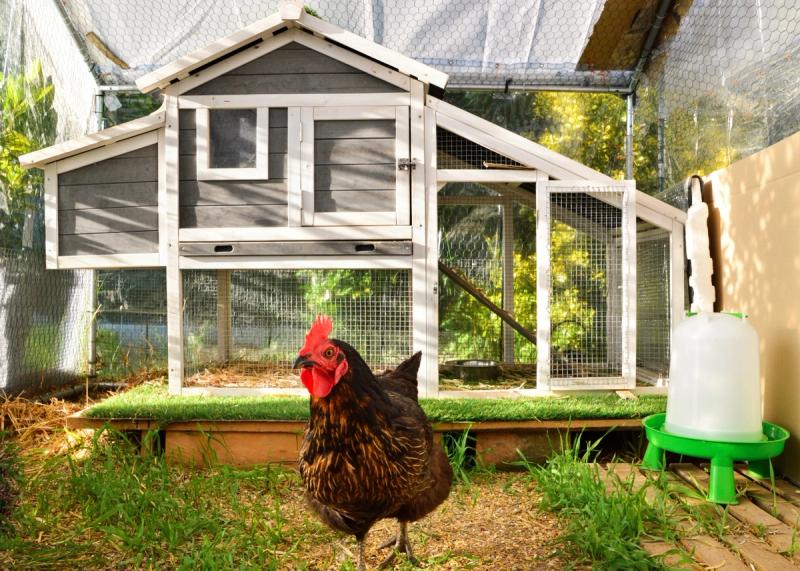Happy Hens Need Smart Housing
Plan for Space, Comfort and Safety


Raising chickens can be a rewarding experience, but setting up a proper coop is essential for their well-being. Whether you’re a first-time flock owner or an experienced poultry keeper, designing a coop that meets your chickens’ needs will help keep them safe, comfortable and productive.
From space requirements to predator protection, here’s what you need to know to create the ideal home for your birds.
Chicken Coop Considerations
Spring is finally arriving, and if you got baby chicks this season, you’re probably starting to think about their chicken coop and pen. A well-designed coop is essential for keeping your chickens happy, healthy and productive. Let’s go over what makes a successful chicken coop and how you can create the best environment for your flock.
Space Requirements
One of the first things to consider is how much space your chickens will need. While it’s always best to provide as much room as possible, cost and available space can be limiting factors. As a general guideline, heavy breeds that typically lay brown eggs require about 2.5 to 3.5 square feet per bird. Lighter breeds, often white egg layers, need about 2 to 3 square feet, while bantams, which are much smaller, can manage with 1.5 to 2 square feet per bird. These guidelines assume the birds have ample space in their outdoor pen.
Coop Construction
Once you know how big your coop needs to be, it’s time to think about construction. Good ventilation is key, but you want to avoid direct drafts that could chill your birds. If you live in a colder climate, consider insulating the coop to retain warmth in the winter. In hotter areas, maximizing airflow will help keep your chickens comfortable. Windows can serve a dual purpose by providing both ventilation and natural light, but they should be positioned so the wind doesn’t blow directly onto your birds.
Lighting is another important factor. Chickens lay best when they receive around 15 hours of daylight. If your coop has plenty of windows, natural lighting may be enough. However, during shorter winter days, you may need to supplement with artificial lighting to keep egg production steady.

Feeders and Waterers
A proper feeding setup ensures your flock stays well-nourished. A flock of 15 chickens can eat about 8 to 10 pounds of feed per day, so it’s important to choose a feeder that can accommodate their needs. Some feeders are designed with built-in grills or lips to prevent birds from spilling feed onto the ground, which helps reduce waste and keeps costs down. Round feeders can also be beneficial as they make it easier for all birds — especially weaker ones — to access food without being pushed away by more dominant members of the flock.
Water is just as crucial as food, and chickens need a constant supply of clean fresh water. A single bird can drink up to two cups per day, meaning a flock of 15 might go through a gallon daily. Running out of water can cause hens to stop laying for up to two weeks, so it’s essential to have a reliable water source. Automatic waterers are a great option, particularly those that use chicken drinking nipples, as they help keep the water clean by preventing contamination from droppings or bedding. If you prefer a traditional waterer, make sure it’s easy to clean and positioned high enough to stay free from dirt and debris. Top-filling waterers with a float mechanism can also be a convenient choice as they allow you to refill without having to tip them over.
Roosting and Nesting
Chickens naturally prefer to sleep off the ground, so you’ll need to provide perches inside the coop. A good option is a 2-by-4 with the short side facing up, giving the birds a secure flat surface to grip. Each chicken should have at least a foot of roosting space, with enough distance between perches to prevent birds from making a mess on those below them.
Nest boxes are another essential feature. While it may seem like hens prefer to lay in just one box, you should still provide about one nest box for every four birds. Roll-out nest boxes are an excellent option because they allow eggs to gently roll into a separate compartment, keeping them clean and preventing the birds from accidentally breaking, or even eating their own eggs.
Predator Protection
Keeping your chickens safe from predators is one of the most important aspects of coop design. Any small openings should be covered with hardware cloth to prevent unwanted visitors from sneaking in. One of the biggest vulnerabilities is the coop door. An automatic chicken coop door is a worthwhile investment, as it ensures your chickens can go outside in the morning and be safely locked in at night without you having to remember to close it manually. This simple addition can provide significant peace of mind and added protection for your flock.
With the right setup, your chickens will have everything they need to thrive. A well-designed coop makes daily care easier, reduces feed waste and keeps your birds safe and comfortable. By considering space, ventilation, lighting, feeding, watering, roosting and predator-proofing, you’ll create a coop that works for both you and your chickens. Enjoy your flock and happy chicken-keeping!
Tags:Poultry Lifestyle

Acreage Life is part of the Catalyst Communications Network publication family.













